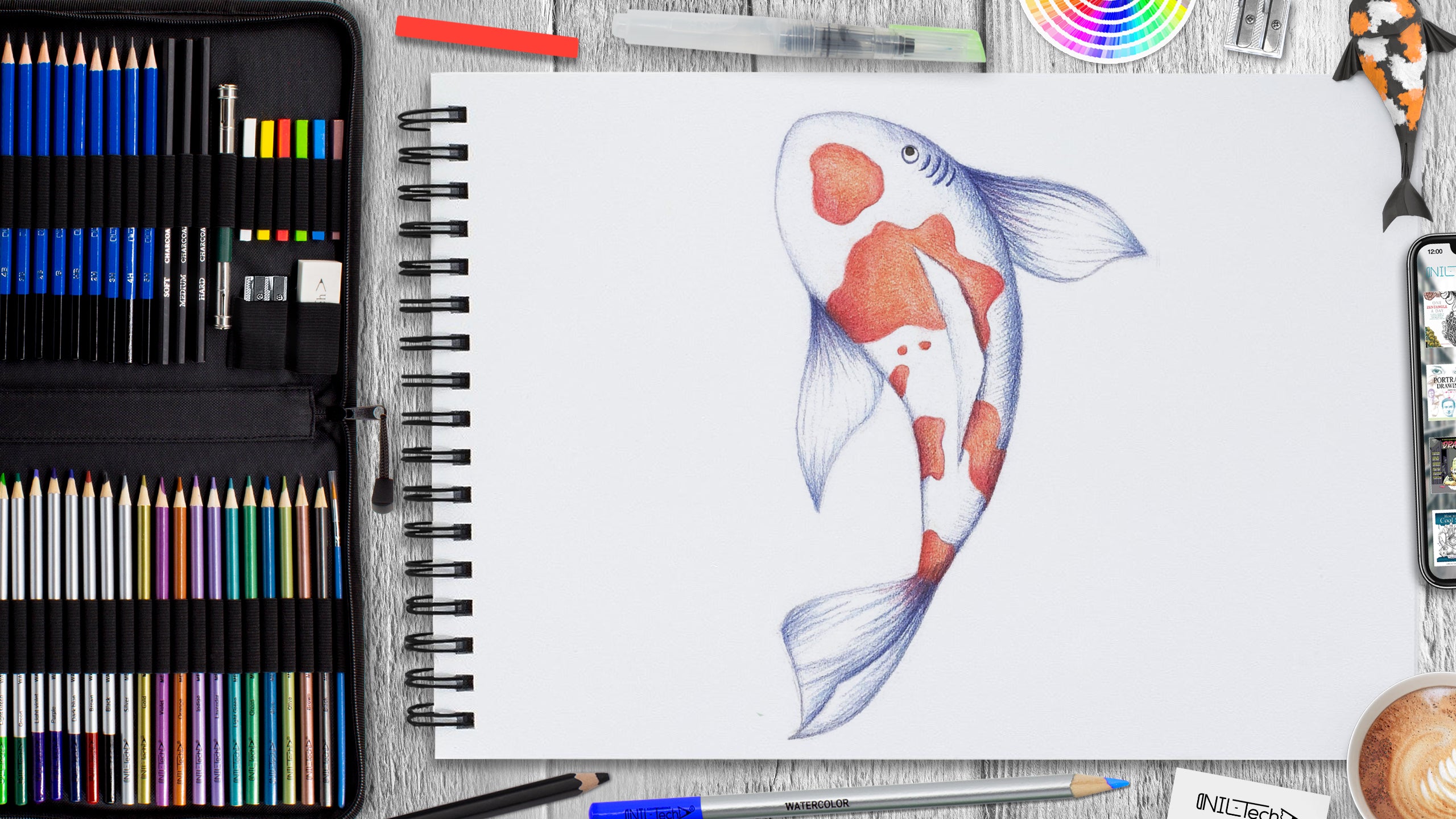
How to Draw a Fish
Sep 24 , 2020

Hi everybody, welcome to a new NIL-Tech drawing tutorial: "Fish". Fish are involved in our society through the pet industry, the recreational fishing industry, and fish farming. Fish are likewise crucial to the ocean, lake, and river ecosystems. While fish are commonly thought to lack intelligence and also emotional capability, they remain, in fact, sentient creatures. They have feelings and can experience both positive and negative emotions.
Here are some interesting facts about Fish:
1. Lungfish can live out of water for several years. It produces a mucus cocoon and burrows itself under the unbaked earth. It takes in air with its lung with a built-in breathing tube that brings leads to the surface. A lungfish has both gills and a lung.
2. Some fish, such as the great white shark, can increase their body temperature. This helps them hunt in cold water.
3. The oldest known age for a fish was an Australian lungfish. In 2003, it was still alive and well at 65 years old.
4. Fish use a variety of low-pitched noises to convey messages to each other. They moan, grunt, croak, boom, hiss, whistle, squeak, shriek, and wail. They can also rattle their bones and gnash their teeth. However, fish do not have vocal cords. They use other parts of their bodies to make sounds, such as vibrating muscles against their swim bladder.
5. Fish can form schools consisting of many fish. They use their eyes and something called a lateral line to hold their places in the school. The lateral line is a row of pores on the fish's sides from head to tail. Unique hairs in the pores can sense changes in water pressure from other fish or predators' motions.
In this tutorial, we used the following supplies:
- B pencil
- colored pencils
- red
- carrot
- burgundy
- dark blue
- blue
- White Vinyl Eraser
- Kneaded Eraser
STEPBYSTEP10
Let's draw a "Fish" step by step!

Step 1. Outline the body of the fish with a circle. Show the body's direction with a line (pencil B).

Step 2. Draw the body's contour over the sketch. Draw fins and a tail (pencil B).

Step 3. Add details: specks, upper fin, eyes, and gills (pencil B).

Step 4. Erase all excess construction lines. Make the contour less bright - this will make it easier to color in the fish (pencil B).

Step 5. Start coloring with bright spots. Add a general tone by hatching them (red-colored pencil).

Step 6. Keep working on the spots. Make the color brighter and add the shadow (colored pencils: red, carrot, burgundy).

Step 7. Since the fish is white, to add volume, we draw shadows and details with blue, starting with the fins (colored pencils: dark blue, blue).

Step 8. Let's finish the drawing! Add volume to the body with shadows. Draw the remaining details: eyes and gills (colored pencils: dark blue, blue).

 |
Drawing Pencil SetExcellent GIFT IDEA - Non-Toxic and safe, easily portable and made with quality top-notch materials. Basic and innovative drawing supplies come together in NIL Tech set as an exceptional replacement for old-fashioned pencil boxes. The main attraction at any occasion from your drawing enthusiast friends, sketchers, artists to your kids or students boosting their creative projects and enjoy their ear-to-ear smile! |






